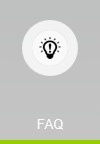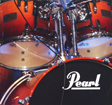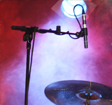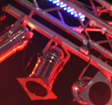FAQ
Buying your first drumkit
When it becomes time to buy a drum kit the first few questions I am always asked are:
Q2: How much do we need to spend?
Q3: Should we buy a new or second hand kit?
Q4: Beginning students Equipment List
Q5: How can I improve my practice sessions
Q1: What do we look for?
The type of drum kit suitable for a beginning student is called a 5 piece drum kit with cymbals.
(don’t forget a stool) This will consist of:
• Bass drum and pedal
• Snare drum and stand
• Small tom
• Medium tom
• Floor tom
• Hi hat stand, 2 cymbal stands and a stool
Cymbals needed for your first kit are:
• Pair of hi hat cymbals - 14" diameter
• Ride cymbal - 20" diameter
• Crash cymbal - 16" diameter
The main brands for cymbals are Zildjian, Paiste and Sabian.
Each of these companies makes a range of good quality cheaper cymbals.
Q2. How much do we need to spend?
The price range of your first drum kit could fall between $500 to $1500.A new beginner kit with cymbals and a stool is available at $600. Extremely good value and quality.
Q3. Should we buy a new or second hand kit?
When looking at a new or second hand kit, look at the hardware (stands, pedals and tom holders), as these are the things that tend to break first. The drums in most cases will last a much longer time.
The new brands that produce good quality at a reasonable price are Pearl, Maxtone, Percussion Plus, Power Beat. You may find good second hand kits with the brands Pearl, Premier, Yamaha, Ludwig, Rogers, to name just a few.
To help you decide consider the following:
A new kit will last longer and when you sell it you will get a better return on the money you spent. If you buy a cheap second hand kit you will probably need to upgrade to a better kit much sooner. Usually the more you spend the longer it will last and the better quality you will get.
Purchasing a new instrument gives benefits of a 12 month warranty period, lay-by, monthly repayments, follow up service and better resale value. A quality music store with a good understanding of drums is the best place to shop.
Good luck and remember your teacher is the best person to advise you, and should always be consulted before any purchase is made.
Q4: Beginning students Equipment List
These are the items required for percussion lessons.
• 8 inch practice pad
• Stand for practice pad
• Sticks (size 7A Primary School Students / 5A secondary school students)
• Tutor Book (Drumming Level One by Peter Matzick)
• Instrumental music diary (to enter each lessons homework)
• Pencil (not pen) to write on your music
Q5: How can I improve my practice sessions?
Develop a regular length for a practice session. This could be from 20 - 45 minutes depending on the time you have been learning. Strive for a minimum of 5 days a week practice.
Keep a diary or journal. Using an instrumental music diary or some form of note book containing work set at each lesson, the amount of time your have practiced for the week and any tips that your teacher has suggested.
Plan weekly:
Set weekly goals and write them into your journal. This will usually be the material your have learnt at your lesson and need to prepare for the next weeks lesson.
Plan your week to include the days you are going to practice then write them into your journal then ask yourself, have you maintained that weekly commitment?
Plan daily:
Set daily practice session goals. This means thinking about what you are going to practice during that particular session keeping it similar to the way your teacher structures each lesson. An example could be starting with practice pad material like rudiments and solos, then move onto the drum kit practicing solos, techniques and playing with backing tracks then finish by playing something you like or revise some work.
A well organised regular practice session will produce consistent improvement, improve motivation and focus you on the important things.















 1
1 2
2 3
3 4
4


